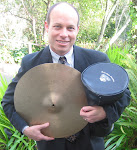Indeed, when asked to name what I learned as a student in my high school history class, I recall role playing a United States Senator. I can tell you all about that simulation that took place 32 years ago-- the political horse trading with the President, the pressure from the party leaders, and the post mortem analysis after the simulation was complete. I do not remember anything about my textbook or even the term papers I wrote in my 1978
Drama and history are a good classroom mix if you enjoy excitement, combining "right side" emoting with "left side" analyzing, student-centered learning, group work, creativity, the study of literacy, and doing what comes naturally.
Students enjoy doing a task that comes naturally to them. And role play is very natural behavior during the teen years, the time for testing and discarding societal roles. Think back to when you were seventeen. How often did you daydream that you were completely self-actualized or someone else, perhaps a famous musician, a star athlete, an adored leader, a gangster, a beautiful sex goddess, a cool, handsome rebel, the life of the party, a rich and successful entrepreneur, or an outstanding scholar? When we use drama to clarify historical ideas, we use an educational technique that melds well with the psychological processes that our students constantly use throughout the day.
Gardner (1993) and others have criticized our classrooms for emphasizing verbal-linguistic and logical-mathematical learning over other forms of human expression. Like singing, drama allows heart (emotional expression) to be combined with head (verbalization and linguistic meaning). Learning about the Battle of New Orleans through song or through the histrionic arts (drama) is fun in class, because we rarely learn through heart and head at the same time. Do you have trouble sitting still for 50 minutes? It was very hard for me when I was seventeen, near the peak in my energy level. Drama lets fidgety kids get up and move around.
What should be done with the shy student who dislikes participating in any type of public presentation or performance? These students will learn vicariously from watching others act and will usually be attentive and very interested to see how their “braver” colleagues do. On the other side of the spectrum, the student that is constantly disrupting class, looking to be the center of attention will love performing. You will transform this student’s need for public attention, usually manifested as self-defeating, immature behavior, into commendable, productive performance.
I use historical fiction to outline important historical, political, economic, philosophical, and moral questions. By fictitiously bringing together people of different places and eras I can better clarify and accentuate these historical, political, economic, philosophical, and moral questions. For example, as president, Bill Clinton and Richard Nixon had very different backgrounds and political philosophies. They both presided over very controversial administrations. As far as I know they never had a serious conversation. So I created a dialog, trying to be true to their personality and worldview. In this dialog the characters show little liking for each other, sparks fly, and the student and teacher acquire a deeper understanding of Clinton and Nixon as well as an improved awareness of the characters’ differences. The characters boldly try to convince others of the correctness of their views. If that means trying to refute a rival’s opinions, using wit and humor, so be it. I placed together controversial and adversarial characters in these skits, creating as much entertainment value and learning as possible. Secondly, I often placed historical characters in the present. Haydn for example argues with a hip-hop artist and joins my students’ world. You can do this too.





These are outstanding comments that reflect an abundance of knowledge about how children learn. Congratulations on your work.
ReplyDeleteThanks--more to come!
ReplyDelete